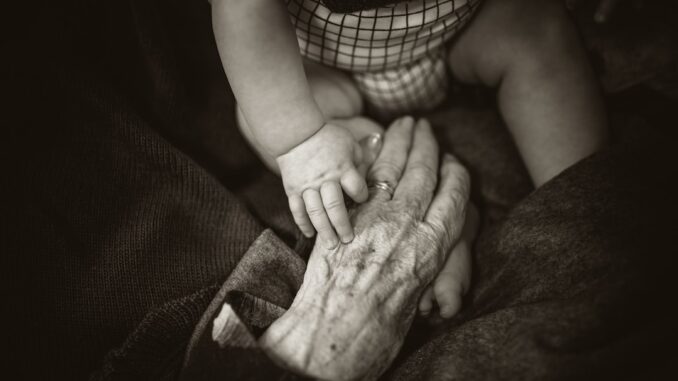
Summary
New York faces a critical shortage of geriatricians, impacting the quality of care for its rapidly growing aging population. This article explores the urgent need for improved geriatric care, including increased training, better care coordination, and addressing financial disparities. The state’s Master Plan for Aging aims to tackle these challenges and transform the way people age in New York.
** Main Story**
New York is facing a serious challenge: our aging population is growing rapidly, outpacing the resources we have to care for them. We’re seeing a significant shortage of geriatricians, and it’s coupled with inadequate training and some pretty stark financial disparities. The big question is, what does this mean for the future of elder care in New York? Doctors and experts are ringing the alarm bells, calling for immediate action to address this looming crisis and make sure our older adults get the specialized care they desperately need.
The Dire Shortage of Geriatricians: A Real Problem
I mean, let’s look at the numbers. New York State only has 641 certified geriatricians for a population of 4.6 million people aged 60 and over. That’s roughly one geriatrician for every 7,100 older adults. Experts say that’s way below what’s considered adequate. Dr. Maria Carney, who’s the chief of geriatrics at Northwell Health and author of “The Aging Revolution,” really nails it when she says, “We have not built out patient practices to help the growing population with multiple medical problems who have functional and care needs.” She’s right, isn’t she? The system we have just isn’t up to par for handling the complexities of caring for older adults with multiple chronic conditions. We’re talking about a lot of people who need a lot of specialized attention.
Training Gaps and Financial Disparities: It’s Complicated
And it gets worse. What’s really compounding the shortage of geriatricians is the fact that elder care training isn’t even required in all medical school programs. It can be a struggle for doctors to specialize in this field, especially when you consider the lower average salary for geriatricians compared to other medical specialties. According to the American Medical Association, geriatricians earn an average annual salary of $258,000, while other physicians can pull in around $350,000. That’s a pretty big difference, isn’t it? It’s not hard to see how this financial disparity discourages medical students from choosing geriatrics. Who can blame them?
Improving Care Coordination and Access: A Holistic Approach
But we can’t just focus on the number of geriatricians. Experts emphasize the importance of improving care coordination and access for our older adults. Let’s be honest, a lot of older New Yorkers face real barriers to care. Things like inadequate insurance coverage, high co-pays, and a lack of accessible transportation can make it incredibly difficult to get the care they need.
So, what’s the solution? Some people are suggesting we expand health and wellness programs in senior centers. These programs could offer essential services like routine health screenings, medication management, and nutrition counseling. Plus, they can provide opportunities for social interaction, which is crucial for combating social isolation, a really common issue among older adults. I remember my grandmother telling me how isolated she felt after my grandfather passed, it was heartbreaking.
It is important to remember the human factor in these matters
Also, better care coordination across the whole care continuum is essential. Making sure different healthcare providers are communicating effectively and working together to meet the needs of their older patients is vital. After all, nobody benefits from a fragmented healthcare system.
New York’s Master Plan for Aging: A Step in the Right Direction
Thankfully, New York is recognizing the need for action. Governor Kathy Hochul issued an executive order in November 2022 to create a 10-year Master Plan for Aging. The plan aims to tackle the diverse needs of older New Yorkers through policy recommendations on everything from supporting family caregivers to improving access to assistive devices. It’s a pretty comprehensive approach, if you ask me.
And here’s a crucial piece of the puzzle: public input. Town hall meetings are being held all across the state to gather perspectives from older residents and professionals in the field. You know, that’s how you make sure a plan actually works for the people it’s supposed to serve. They are, at the end of the day the one’s who understand the issues the most.
A Call for Age-Friendly Care: A Vision for the Future
The Master Plan for Aging represents a significant step towards creating a more age-friendly healthcare system in New York. This approach focuses on maintaining older adults’ health, function, and independence. It’s about prioritizing wellness and quality of life over just treating diseases. Do you know, as our population continues to age, this shift in focus becomes increasingly crucial to ensure that older New Yorkers can age in place with dignity and access to the support they need.
As Kristen McManus, associate state director of AARP New York, puts it, this plan has the potential to transform the way people age in the state. Addressing the shortage of geriatricians, improving training, and ensuring equitable access to care are all essential components of this transformation. The Master Plan for Aging is scheduled to deliver a final report to the governor in January 2025, it’ll be interesting to see the long term effects of the plan.
I think, ultimately, it’s about creating a society that values and supports its older members. After all, we’re all going to get there one day, aren’t we? Making sure the system works is important for everyone.


Be the first to comment